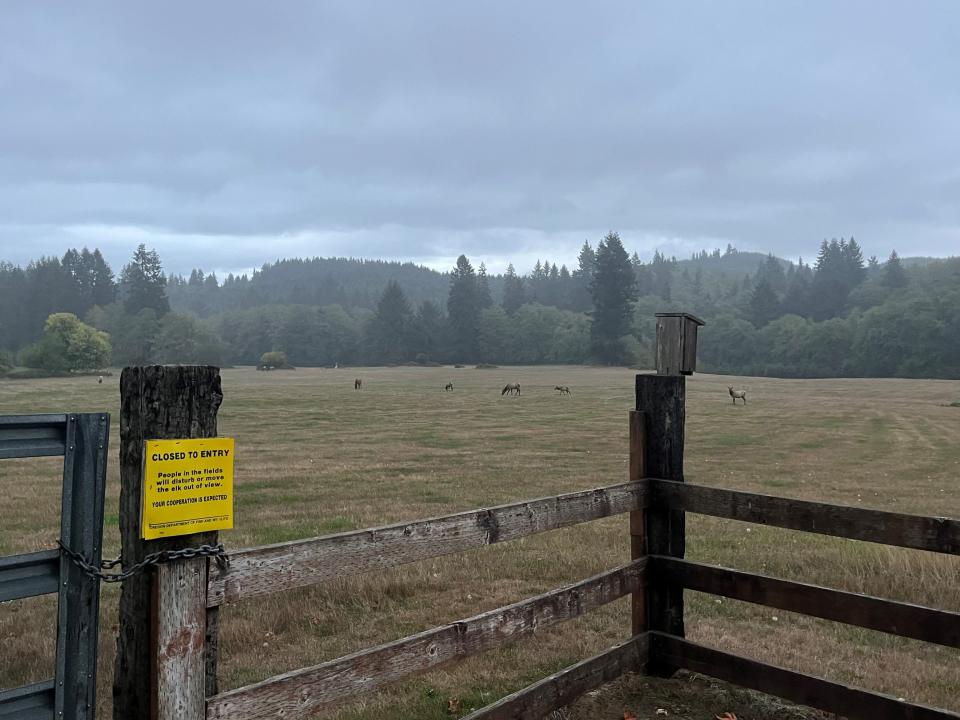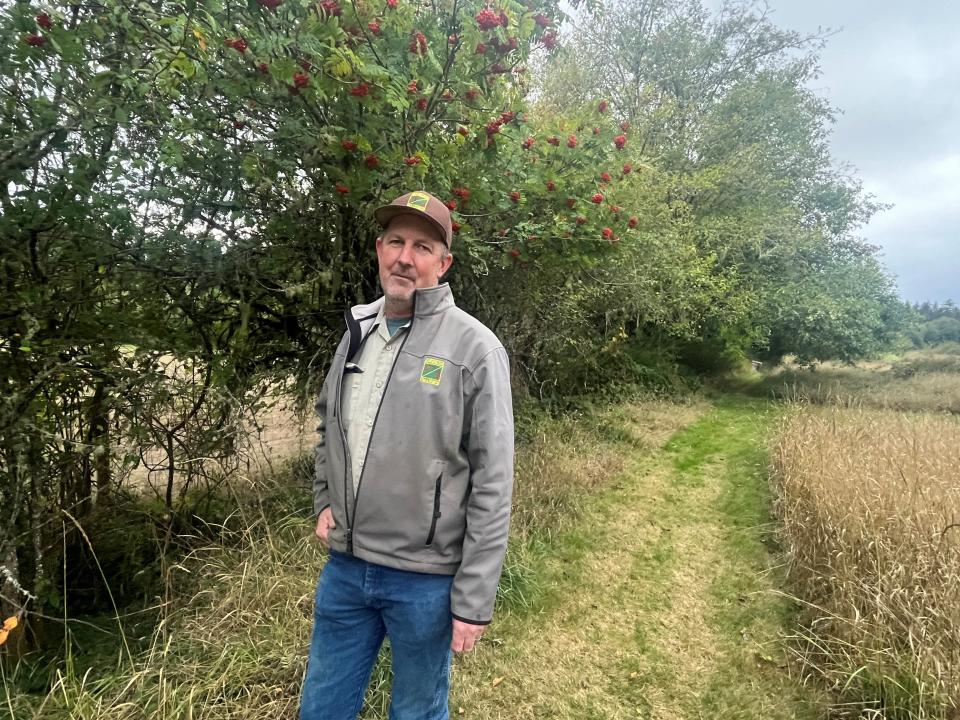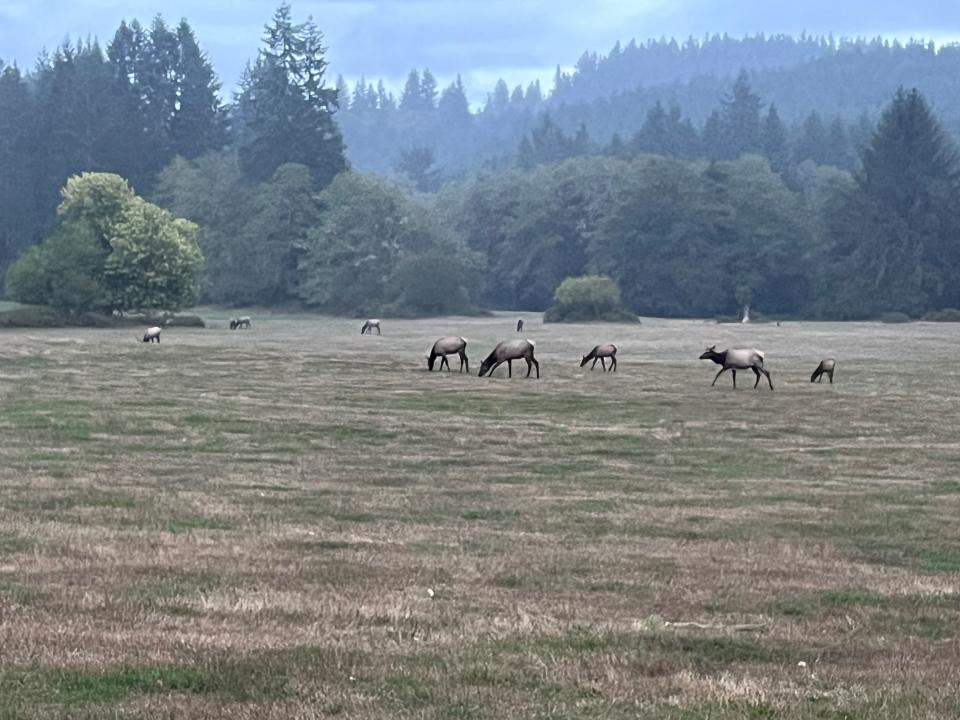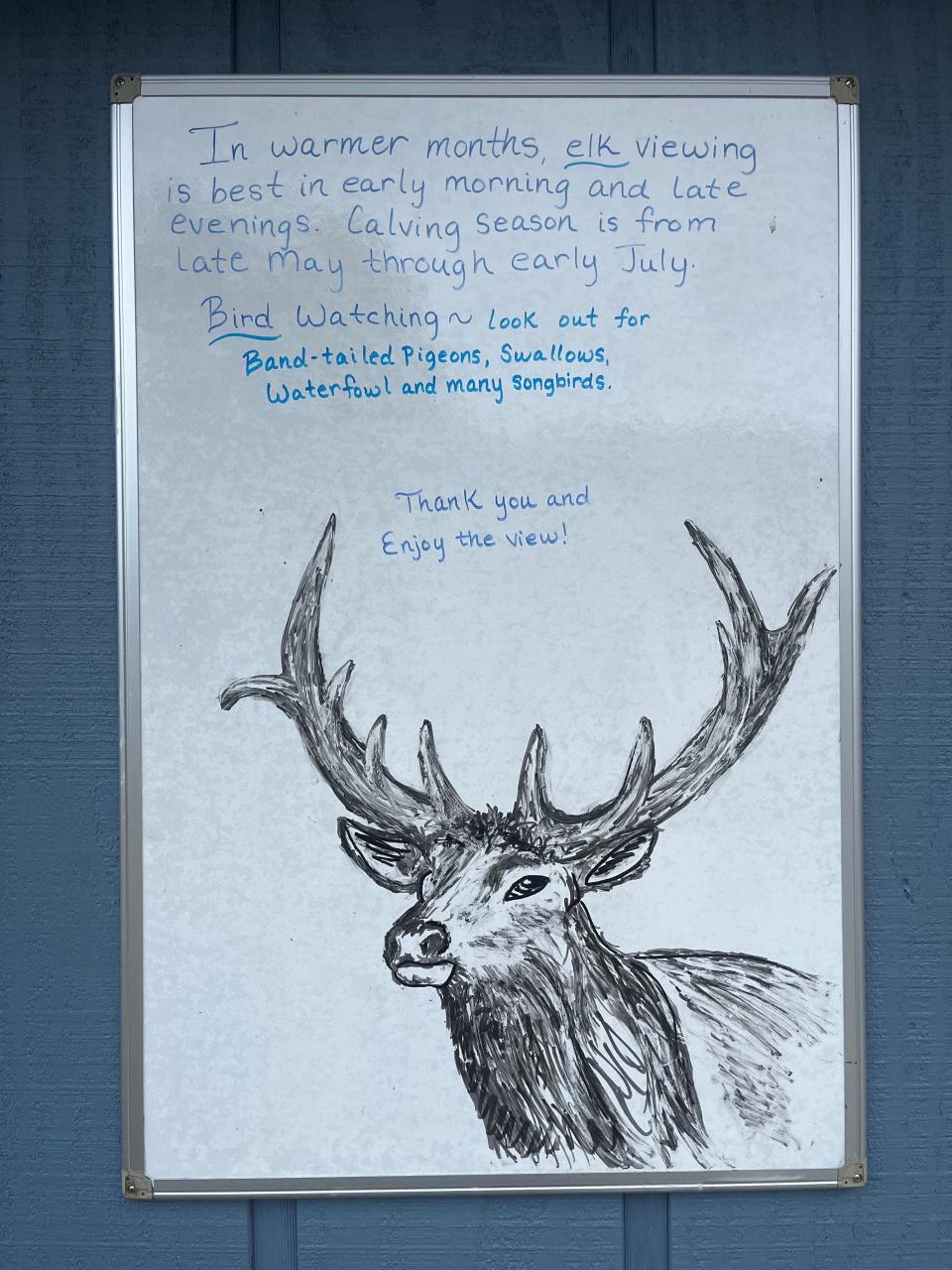Roosevelt elk bugling, breeding season a spectacular sight at Jewell Meadows Wildlife Area
- Oops!Something went wrong.Please try again later.
Hunting season has begun in Oregon, including for Roosevelt elk. But Lillian and Rock Cochran, volunteer hosts at Jewell Meadows Wildlife Area, claim observing the animals is just as gratifying as hunting them.
“I just think they’re impressive,” Rick said.
Lots of Oregonians seem to agree. Each year, more than 130,000 people stop by one of Jewell Meadows’ three viewing areas in Clatsop County to catch a glimpse of the animals.

Seeing elk at Jewell Meadows Wildlife Area
Last week, I made the two hour drive from Salem to the Oregon Coast Range not just to watch the 700-pound animals graze, but to listen to them as well. Mid-September is when the breeding season, or rut, enters full swing, and visitors to Jewell Meadows from now to mid-October may have the chance to hear the high pitched call of male elk establishing their dominance, or bugling.
I drove into the main parking lot of the 1,114-acre wildlife area along Highway 202 near the Nehalem River. By the time I noticed the nondescript sign signaling my arrival, I felt like I was truly in the middle of nowhere. Bryan Swearingen, who has lived on the refuge for 30 years, first as a wildlife biologist and now, as manager, knows it all too well.
“We were looking a number of years ago at the classification of where we live, and it’s not rural – it’s pioneer,” he said. “Evidently, that is a real thing.”

If you're willing to make the trek, you won’t be disappointed. Within 15 minutes of my arrival, the bulls’ bugling, which sounds like a mix of a whistle and a roar, interrupted my conversation with Swearingen. We quickly decided to head down to the wire fence separating us from the dozens of females and two males in a wide field.
The larger of the two bulls soon began nudging some of the females along, at one point dipping into the forest bordering the meadow before coming back.
Swearingen said visitors can see up to 200 elk during a single visit to Jewell Meadows in the fall or winter. During about a three week stretch at the end of September, the males round up groups of females and try to keep them contained for breeding. Once the males shed their antlers, they separate from the cows and the calves and go out on their own or spend time with other males.
“Then come about the end of August to the first of September, it starts all over again – and then the bulls aren't friends anymore,” Swearingen said.
During the rut, Swearingen recommends going out to see elk either early in the morning or in the evening. Elk do best in cool temperatures, so they prefer to take cover when the sun is highest. Swearingen also warned to check the weather before you go, as morning fog could easily obstruct a good view.

Roosevelt elk in Oregon
It may be easy to mix up Oregon’s Roosevelt elk with their eastern cousins, Rocky Mountain elk. The latter are more plentiful in the state with an estimated population of 74,000 compared to the Roosevelts’ 59,000. But other than their larger size, Roosevelts are darker in color than Rocky Mountain elk and have smaller antlers.
An easy guide to telling them apart is Highway 97. While there’s some overlap of the subspecies, Roosevelt typically keep west and Rocky Mountain elk stay east of that dividing line.
Jewell Meadows has been a prime destination for Roosevelt elk lovers around Oregon since 1969, when the Oregon Department of Fish and Wildlife opened the 183-acre main viewing area for education.
While the ODFW hoped to draw people with interest in the animals, they expanded the area to help those who saw them as pests. Swearingen said the ODFW bought up private lands to make up the Fishhawk, Beneke and Humbug tracts in the 1970s to provide a dedicated space for the elk that were eating farmers’ crops and invading coastal towns.
That’s also why Jewell Meadows grows hay for the elk in the winter. It’s supplemental feed, but it keeps them within view during the daytime and aids in capture and relocation efforts. Hunting is the most common strategy to manage populations, but ODFW will also move Roosevelt elk to other areas where they thrive, such as the northern Cascades, California or even Alaska.
As the biggest subspecies of elk in North America, Swearingen said being able to fill Roosevelts’ stomachs may be the biggest predictor of whether they will thrive in a given place.
“Roosevelt elk are pretty resilient as long as they have a food source,” he said. “If we're moving Roosevelt elk someplace, they need to have a place where they can basically have green feed all year round.

Winter feeding tour
What Jewell Meadows is perhaps best known for is including visitors in the feeding process. From December through February, Swearingen or a volunteer host takes a group of 15 people each day out on a wagon through the meadow, throwing hay to groups of elk to eat just a few yards away.
“We started offering some tours back in the early 1980s,” he said. “People really enjoyed being out there, getting to be close to the elk and feed them.”
Jewell Meadows is the only place in Oregon to offer such a feeding tour – and it’s free. Reservations are required in advance to participate, and the hourlong tour consistently books out the entire winter the same day they open up on Dec. 1.
Whether you journey to Jewell Meadows in the fall, to hear them call, or the winter to feed them, the pristine quiet and calm presence of the giant animals make it easy to want to return.
“Other than the bugling, it’s really just peace and quiet,” Lillian said.
Olivia Stevens is an outdoors journalism intern at the Statesman Journal. She can be reached at ostevens@statesmanjournal.com
This article originally appeared on Salem Statesman Journal: See Roosevelt elk at Jewell Meadows Wildlife Area on the Oregon Coast

